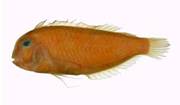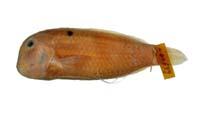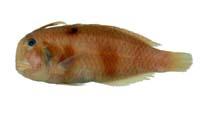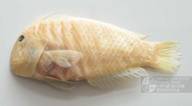TELDAP Collections
| The Geisha Among Fish – Xyrichtys Geisha |
|
In 1986, two Japanese ichthyologists, Araga and Yoshino, described a new species of Xyrichtys—Xyrichtys geisha.
The fish was so named based on one striking feature: its black and red coloration.
The broad scarlet stripe across the dark black body resembles the stark contrast between the black hair and red lips of a traditional Japanese geisha.
Hence, the image of a geisha with a reserved small mouth and passionate eyes moved the patriotic Japanese to bestow on the fish such a dreamlike scientific name.
In 2006, twenty years after the discovery of this new species, the Eastern Marine Biology Research Center (EMBRC) of the Fisheries Research Institute (FRI), COA, participated in the implementation of the National Digital Archives Program planned by the National Science Council (NSC). They also found “Geisha” off the east coast of Taiwan. While the Hollywood movie “Memoirs of a Geisha” was in the spotlight worldwide, the coincidental appearance of the fish made the fisherman who had caught it claim that no one had ever seen such a beautiful and enchanting fish. Apparently, the Geisha among fish is no less popular than the touching story of a real geisha. In the taxonomic hierarchy, the Geisha among fish is cataloged under Xyrichtys / Labridae / Labroidei / Perciformes. Its formal name is Blackbacked Razorfish, but it is commonly called “The Bride in Red,” “The Japanese Woman,” or “The Four-Tooth” in Taiwan. From these names, it is not difficult to imagine the features of this fish species: they have brilliant colors as brides do and charming canine-like teeth like those of Japanese women. These names, given by Taiwanese fishermen, have demonstrated a vivid description of Xyrichtys geisha.
According to the data stored in the Fish Database of Taiwan, there are six known species in the genus Xyrichtys. Their body is flat laterally and they have a razor-ridged back with a round caudal fin.. They have a blunt mouth, conical teeth in the upper and lower jaw and large, often protrusive canine teeth in the front. Swimming in a slow and graceful manner, Xyrichtys usually inhabit the sandy areas around coral reefs or sandy sea beds which contain shell fragments. Among these fish, Xyrichtys pavo (Peacock Razorfish) are most commonly seen off the east coast of Taiwan. Peacock Razorfish is brownish in color, with a yellow-brown tip of the dorsal fin and a vivid red spot on the upper side of the pectoral fin. Geisha and Peacock Razorfish are the first species described in Taiwan's literature. Geisha are dorsally and ventrally black, sharply contrasted with the mid-section of their body colored bright red. Their fin membrane forms a unique concave surface between the second and third dorsal spine. The digital archives of fish specimen off the east coast of Taiwan, written by Fisheries Research Institute, COA.
Collection of fish species related to Geisha among fish (Xyrichtys Geisha)
|






















